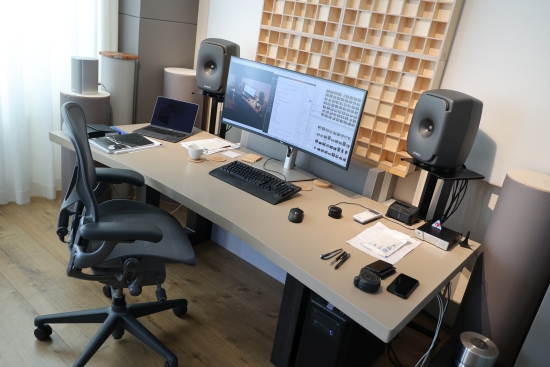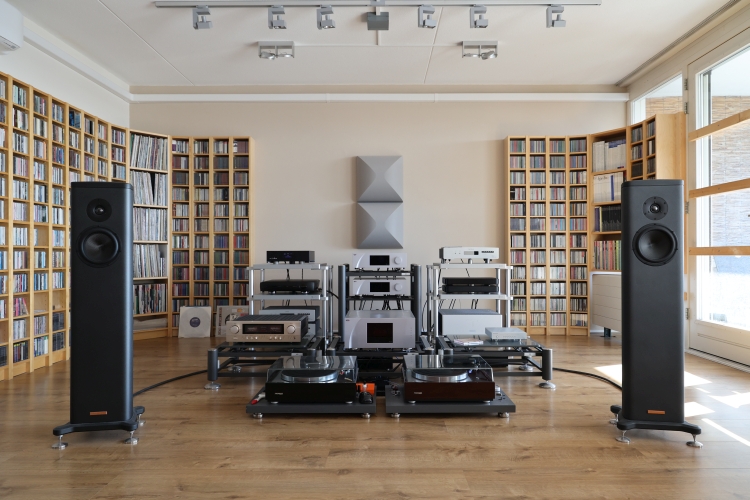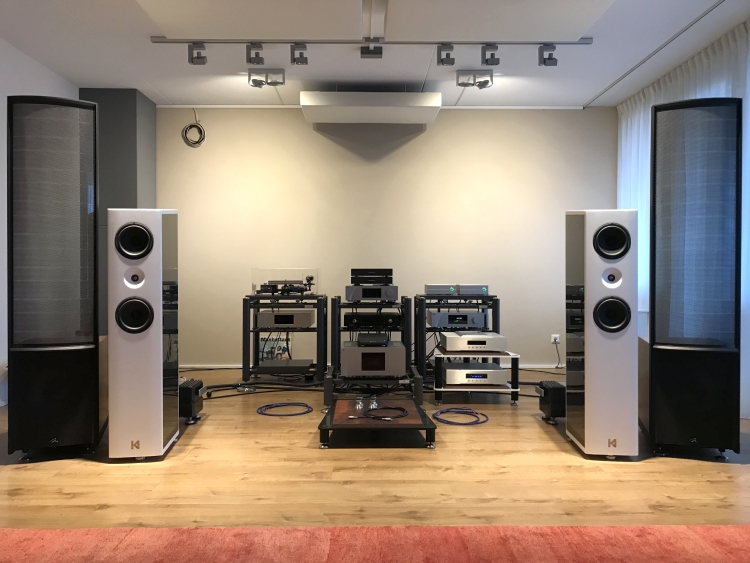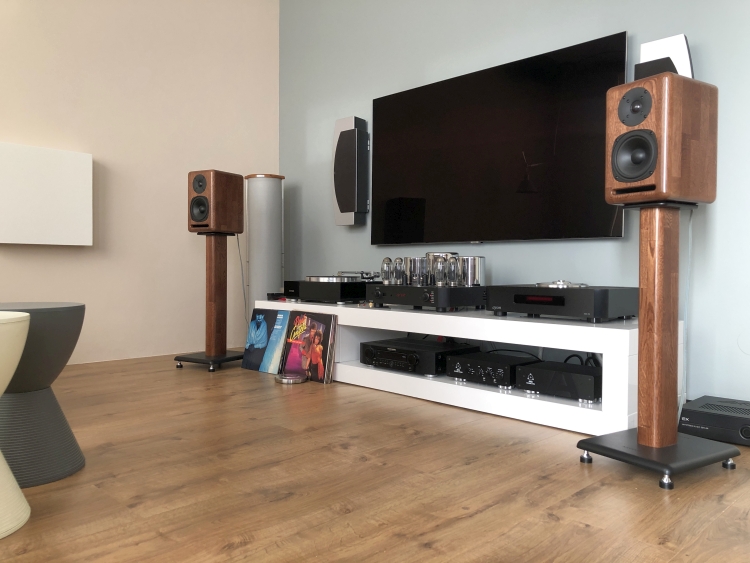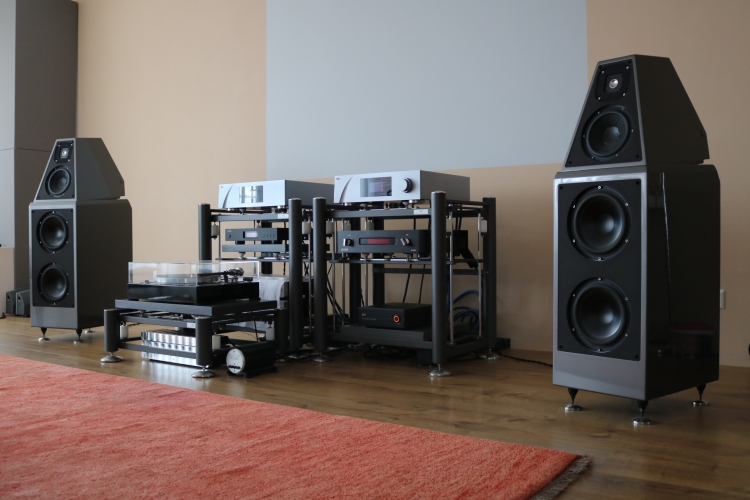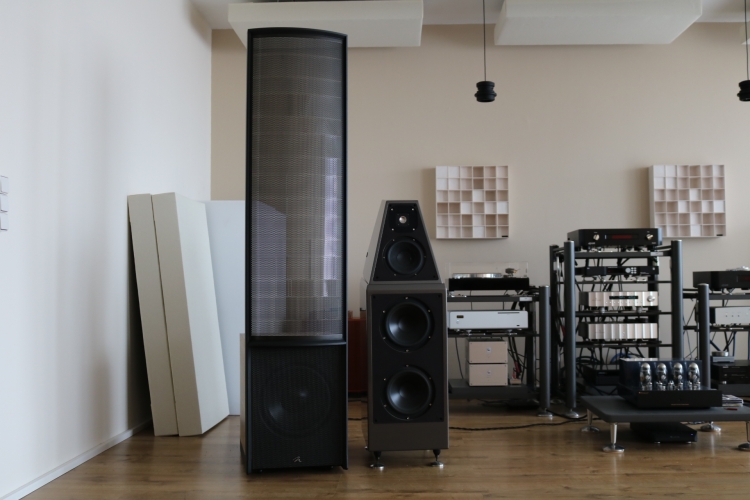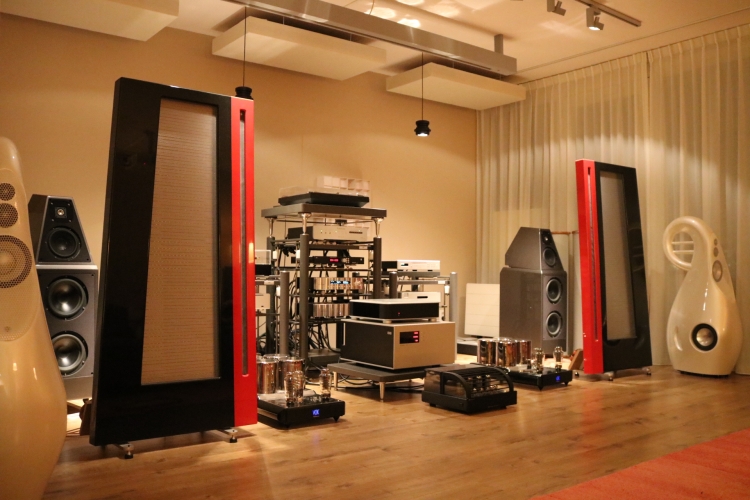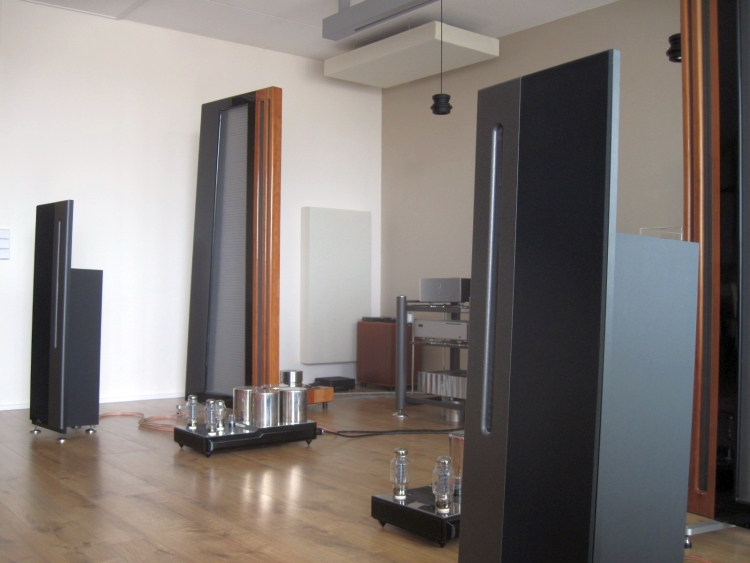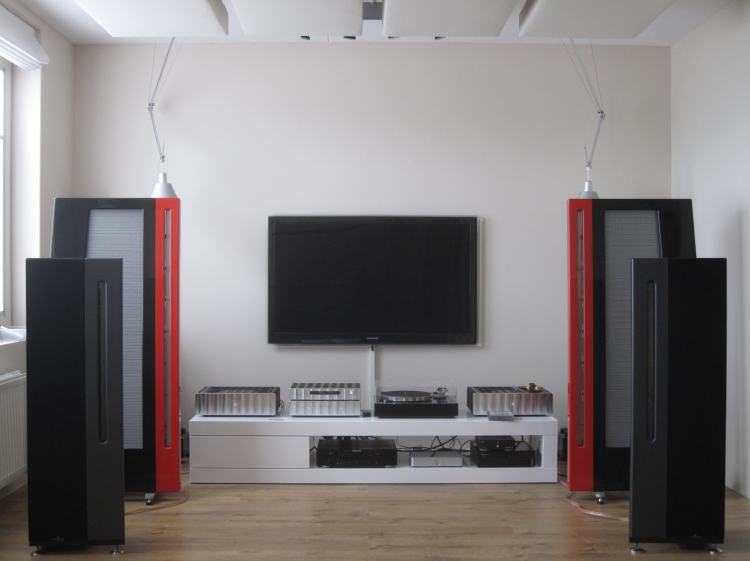HFA Audio Setup History 34 – Media Room v5 – May 2024
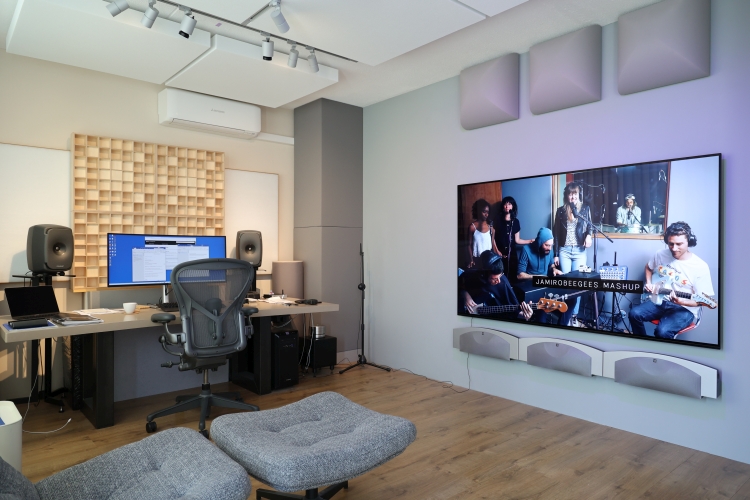
There was still a particularly annoying hollow-sounding standing wave in the upper bass/lower midrange. This did not seem to affect the sound in the main system but it was pretty unpleasant when conversing in the hallway. No matter what kind and how many panels I hung on the ceiling, I could not fix this issue.
As coincidence has it, this was around the time when Eelco Grimm visited to drop off the MU2 Music Server for review. I explained the issue to him, hoping he would have some helpful advice. He looked at the 250 x 200 cm George Boonstra painting and suggested adding damping material behind it. This surprised me. Surely, I figured, a relatively thin layer of damping material behind a painting would not do much to such ferocious standing waves? Eelco countered that these waves are not merely bouncing between two adjacent walls but are “breathing” in all directions over the entire hallway and that a sufficiently large surface would still cause enough resistance to have a beneficial effect.
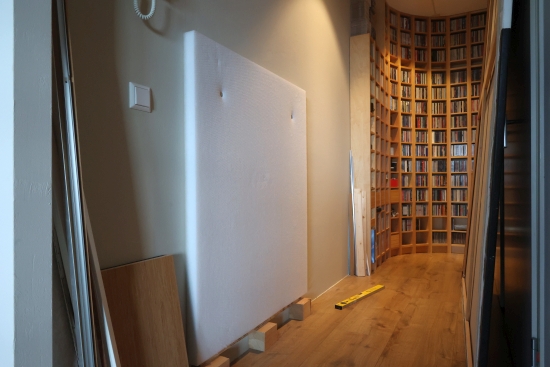
I still had two 10 cm thick 100/120 cm Akotherm panels stocked away, so this theory was easy enough to test. And indeed, even after covering half the painting area using the two panels, the echoey sound was already massively reduced!
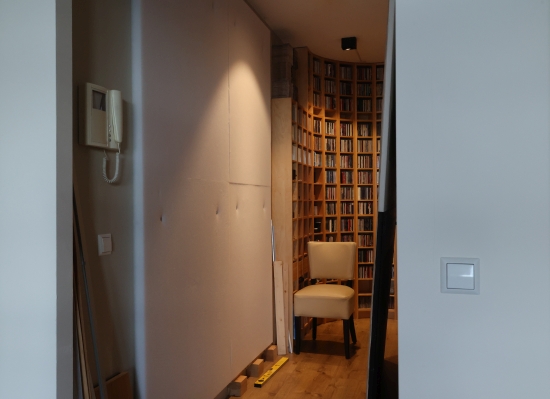
What’s more, after I had finished covering the entire area with two more panels, to my pleasant surprise, I found the bass in the main system further improved in clarity and articulation. That was a real nice bonus!
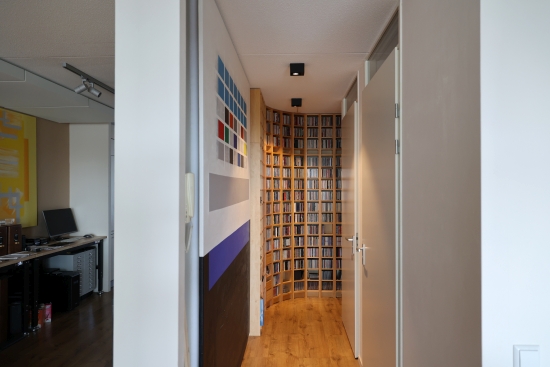
The beauty of the finished situation is that the treatment, in all its effort and complexity, is entirely hidden from view. I extended the CD racks to just beyond the former door post so that they appear to continue into the next room, creating an interesting, spacious effect.
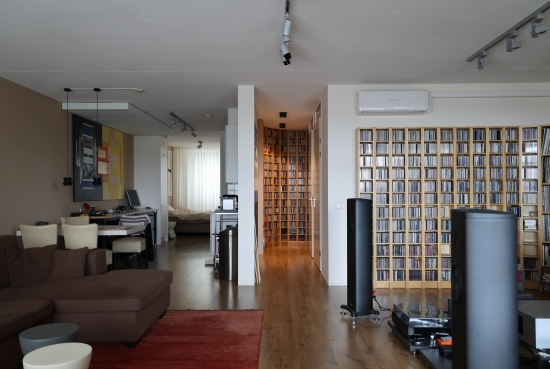
Meanwhile, the other side of the wall was looking great! Of course, all cables are routed invisibly through the wall, and the surround amplifier is on the other side. The single cable that can still be seen is of a measurement microphone that I intend to remove after the final measurement as soon as the room is entirely finished.
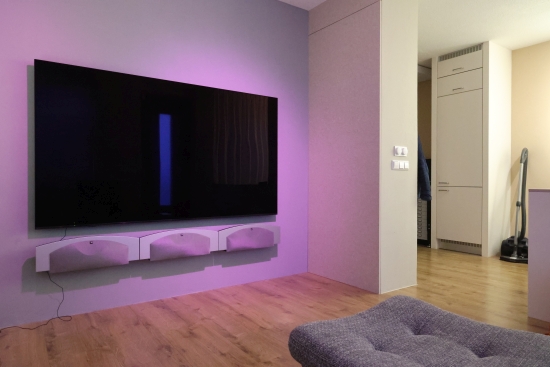
Of course, when writing this article, the joint between the original gypsum-block wall and my newly made lumber-and-gypsum board wall is already showing cracks. I knew that would probably happen, so I used extra-flexible putty, but whenever you join two walls of different materials, it is still asking for trouble. “Fortunately”, I do not see as sharply as I once did, and I can’t see the cracks unless inspecting the wall from up close.
After addressing the properties of the wall itself, the main system sounded superb, and the cinema system performed pretty well, as long as I used the Audyssey room EQ system (automatic Room EQ on the Denon surround amp). However, the Genelec system still needed more attention.
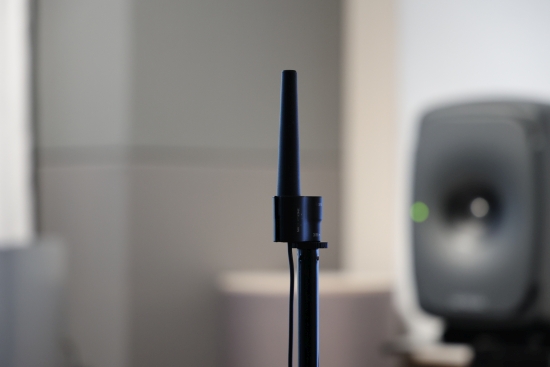
The Genelec GLM system is fantastic (and massively quicker than Audyssey, btw) and a big help in making the best of an acoustically bad situation. However, it is not the answer for every situation. Ultimately, a digital correction system cannot do all the same things as proper physical room treatment. For instance, when there are deep dips in the bass due to cancellations, there’s nothing DSP can do to fix this.
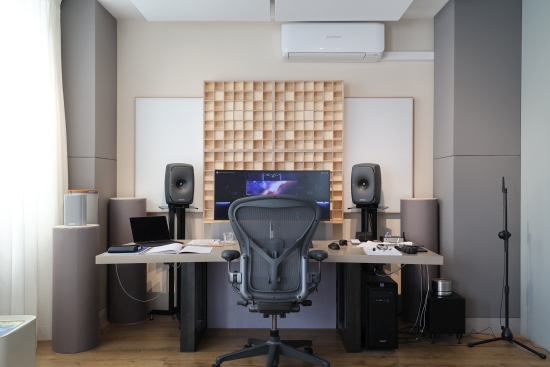
This is where R.T.F.S (Raumakustik Tools Farshid Shahlawandian) acoustical treatment comes in. Using two Big Blocks B in each front corner massively alleviated several issues, such as hollowness and boominess at specific frequencies and a portion of the phase cancellations. RTFS also offers corner pieces to fill up cavities and work around cables so that I could make a continuous column from floor to ceiling.
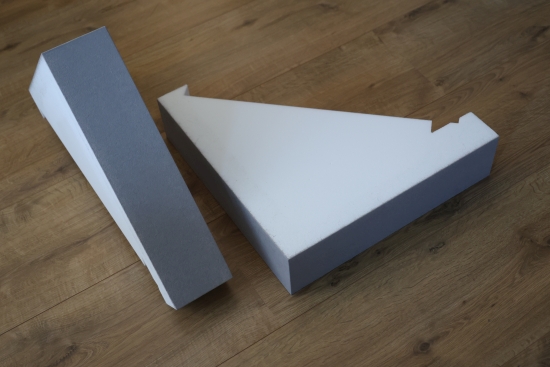
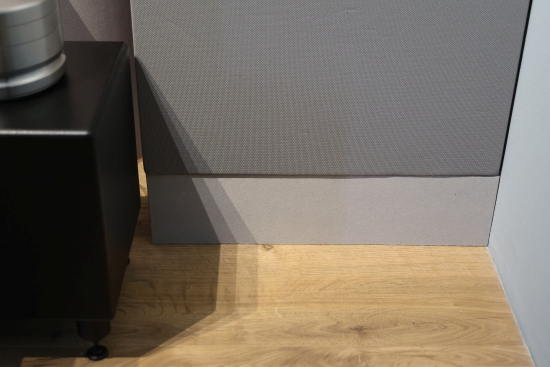
But it wasn’t enough. Ultimately, I had to position the Genelecs close to the rear wall to avoid severe cancellations in the upper bass range that even the Big Blocks could not fully address. As a result, I had to use even more bass trapping to help combat the resultant rise in frequency response. I added massive amounts of Rockwool behind and underneath the desk, which helped tame some of the excess bass. Then, I added a set of Acoustic Module Premium Tube Basstrap that looked pretty and had a subtle beneficial effect in the midrange but did very little in the bass. But at this point, the GLM system gleefully added the final touches.
Of course, as one might expect, such massive bass trapping also causes the room to sound dry and dark. As I expected this, I opted for the Big Block B, which has a reflective coating under the outer cloth to reduce the dulling in the treble. But more was needed, given the amount of damping that I used in such a relatively small space. This is why I added 4 T.Akustik Spektrum D20 Diffusors. These 60cm x 60cm pieces are of an entirely different order than the 50cm x 50cm Hofa variants that I used years ago in the main system. To my delight, these rather heavy units brought some liveliness and breath back into the system and even helped linearize the bass response! I could not believe it, so I ran the GLM process two times with and without the panels, but sure enough, the measurements did not lie, and the diffusers really did reduce several dips and peaks from 100Hz and up with as much as 6dB at 600Hz!
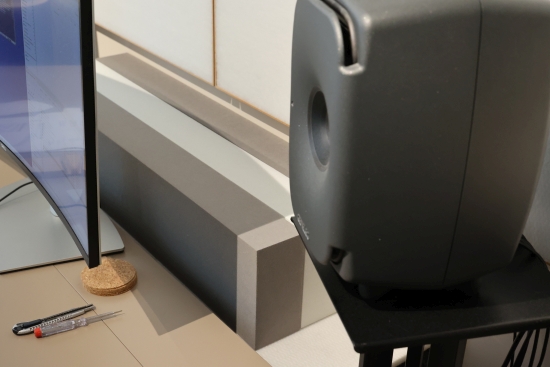
My best guess is that the assembly of the diffusers’ heft, combined with their “floating” placement on a wood panel on top of three RTFS Stripes (shown above), acts as a Mass Resonator that purely coincidentally happens to work beneficially in this setup. This was just a test setup, and I intended to fix the panels more securely later, but as they work so well, I’ll leave them as they are.
I used to own nine Acustica Applicata DaaDs that I purchased in a second-hand sale many years ago to combat issues in this very same room. As I found at that time, the DaaD’s influence is subtle, and they’re more effective at controlling the reflectivity than at reducing bass excess. In any case, the single DaaD 2 that I still have was placed on the left (between the surround speaker and the Big Block), which slightly reduces the curtains’ damping effect. The room still needs a little bit more diffusing, but because I want the solution to be pretty as well as effective, this remains a work in progress for now.
At this point, I still had minor issues with the cinema sound, notably a flutter echo (easy to fix) and a slightly messy bass response despite using Audyssey. I added two RTFS Ceiling Vanes directly above the desk, which helped even out the Genelec system but did very little for the cinema system. Clearly, those issues were caused elsewhere in the room.
